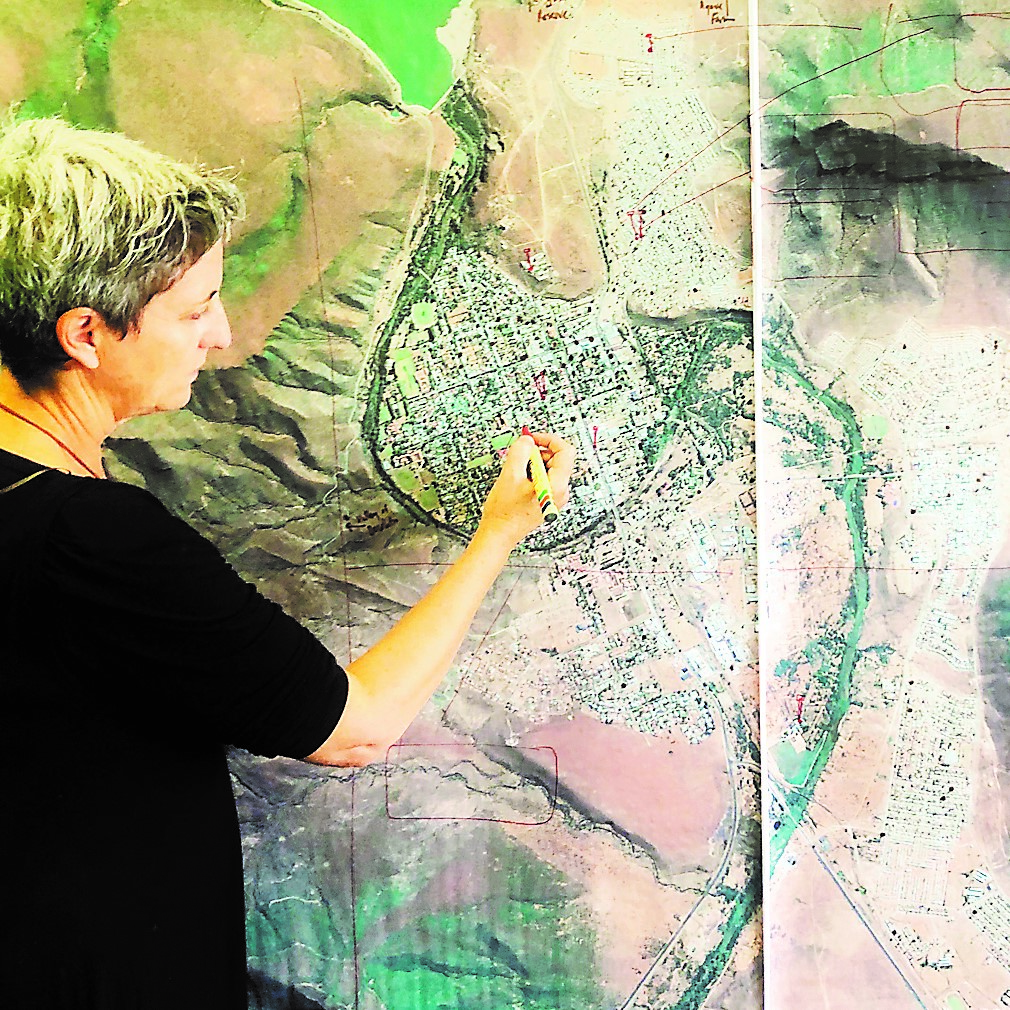click to dowload our latest edition
CLICK HERE TO SUBSCRIBE TO OUR NEWSLETTER


Published
4 years agoon
By
adminROBYN SASSEN
Six finalists for the inaugural Social Impact Arts Prize (SIAP2020) based in this town were announced last week, and the awarded projects will be named soon. Among the finalists is Johannesburg artist Kim Lieberman.
Two years ago, Roelof van Wyk, SIAP’s co-director with Hanneli Rupert, reimagined the Rupert Museum in Stellenbosch. They pondered “a museum without walls”, which led him to think about “what it means to open up the spaces to make them not specific to the elite, enabling communities to feel that their stories are being told in it”.
But, slow is the operative word. “We can’t change the world in one go, but we can slowly nudge a big boat a tiny bit in one direction if we all work together, pushing, until it becomes a movement.”
Today, under director Robyn Cedras, the Rupert Museum often hosts 300 children weekly, for free. It’s still about art, but it’s also about having fun.
SIAP’s inaugural finalists are: Gustav Praekelt and studioMAS with Hello Wolk!, which connects the ancient San people’s drawing practices with a contemporary digital community; Lieberman and Paragon Architects’ Revealing the City, which uses lace and giant pins to reflect how society meshes; Kasthuri Naidoo and Ayesha Mukadam’s Long Table, considers how sharing food can puncture social boundaries; PLANTed by Lorenzo Nassimbeni, Andrew Brose, and Casper Lundie gives new visibility to traditional medicinal plants; the mass choir, Tears become Rain by David Brits and Raiven Hansmann; and Mirage, by Studio August, a public-space idea.
Described by Van Wyk as “an ecology of funding foundations”, the Rupert Art Foundation, a non-profit educational institution, backs SIAP. Pushing the wall-less museum idea further, Van Wyk explains how this concept can create new opportunities for art practitioners who don’t make work for traditional retail art galleries.
“Our galleries can accommodate maybe 1% of this country’s talent. Not all art practices in this country can stand their own in a retail art market appropriate for a highest-bidder auction house. Most South African artists are in communities. They teach and make art – and when I say artists, I include musicians, poets, stargazers and scientists.”
And, global issues are the buzz. “There’s one big equaliser; it’s going to erase all our differences: Climate change. We are part of a global zeitgeist (spirit) We cannot leave it for the politicians to plan or decide.”
The “carrot” in SIAP is the Rupert Art Foundation’s wherewithal to realise creative dreams to solve global problems, whether it is about getting 4 000 choristers to sing off the same page, or the technicians to make lace in augmented reality.
The organisers commissioned six industry, museum, and technology heavyweights from as far afield as Greece and the United Kingdom to judge the entries, chaired by former Business Arts South Africa head Michelle Constant.
Judging was not about uploading a digital picture for a curatorial team to mull over. Artists no longer wish to make pretty pictures, they want to change the world. “And this shows why SIAP differs from any other South African art competition,” says Van Wyk. “We’re trying things out.”
Lieberman, a veteran conceptual artist, is delighted to be a finalist. “This project is very much a part of my artistic conversation. It enables me to look at my whole life as an artist, but also to look at other artists whose work has had an impact on mine.” She cites Joseph Beuys’s 1980s project of 7 000 trees in Kassel; the sound sculptures of Canadian artist Janet Cardiff in the 1990s; and how French conceptual artist Sophie Calle interviewed people at the former sites of fascist or Nazi statues, as examples.
In Revealing the City, Lieberman works with Anthony Orelowitz, Dewalt Veldsman, and Kirsty Fick of Paragon Architects. “When I first met them, they were working on a wellness centre in Nirox. Very green. Very conscious. [My project] fitted their priorities as well as mine.”
Lieberman is no stranger to Graaff-Reinet. In 2017 she did a project with the Royal Block neighbourhood in uMasizakhe, the Graaff-Reinet township. But SIAP has little to do with the town’s existing projects, says Van Wyk.
The Rupert family’s investment in Graaff-Reinet ultimately aims to benefit everyone. “The family wants to bring people together in this town,” says Van Wyk. “It’s about crossing the divide, and encouraging different community members to engage with one another. It’s about developing compassion.”
The finalists’ exhibition opens at Stellenbosch’s Rupert Museum on 7 March. The projects will be announced at a public gala event at the museum on 12 March, and the awarded projects will be installed in Graaff-Reinet between April and July 2020.
